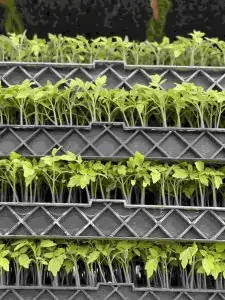
PlantTape Revolutionizes Tomato Industry with New Automated Transplanter
PlantTape, a leader in agricultural technology, is proud to announce the commercial launch of its latest innovation: an Automated Tomato Transplanter. This cutting-edge solution is poised to transform the way tomatoes are transplanted, offering increased efficiency and precision for growers worldwide.
Designed with extensive input from tomato growers and industry experts, the Automated Tomato Transplanter addresses the specific needs and challenges faced by modern agriculturalists. This innovative module can plant up to 12″ tall transplants, ensuring rapid and uniform planting across fields. With the capability to bury plants 8″ deep and inject over 400 gallons of water per acre, this technology optimizes growing conditions for maximum crop health and productivity.
“Our team is thrilled to introduce the Automated Tomato Transplanter, the culmination of years of research, development, and collaboration with the tomato industry,” said Danielle Michaels, Director of North America Sales at PlantTape. “We recognized the need for a solution that expedites the planting process while saving planting labor, and we’re proud to deliver a product that achieves both.”
Currently, the Automated Tomato Transplanter is available for commercial planting trials for the 2025 tomato season. Growers interested in learning more about this groundbreaking technology are encouraged to reach out to Jesus Vasquez at PlantTape for additional information.













Recent Comments